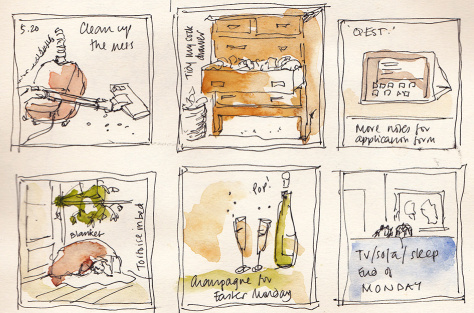
Tim Collins, counsel for ST-PCV Tenants Association
By Maria Rocha-Buschel
Each year, prior to the final vote of the Rent Guidelines Board that determines the increases the city’s stabilized renters will have to pay, tenant advocates as well as real estate industry professionals both make impassioned pleas at public hearings.
At one such hearing last Thursday, tenant advocates called for a rent freeze while landlords pushed for increases.
Tim Collins, head counsel for the Stuyvesant Town-Peter Cooper Village Tenants Association and a former executive director of the board, noted that while last year he had urged the board to roll back rents, this year he was advocating for a rent freeze.
“The price index is significant but when weighted against other economic factors, a rent freeze would be appropriate,” he said.
Collins explained that he wasn’t basing his decision on tenant welfare.
“Although I respect and am concerned about people left out by poverty and one of the barriers to a decent life is housing, but the board shouldn’t focus on making every apartment affordable,” he said. “But the board also shouldn’t focus on making every owner profitable. If you look at what you’ve done, what prior boards have done, all told since 1990 (increases have been) higher than what is needed to keep owners whole.”
He acknowledged that not all owners were necessarily doing well, but he pointed out that there is a hardship mechanism those landlords can take advantage of.
“There are small buildings everywhere,” he said. “To let that relatively small portion of the market dictate the rents wouldn’t be appropriate.”
Jack Freund of the Rent Stabilization Association, which called for a 4 percent increase on one-year leases and an 8 percent increase on two-year leases, argued that small buildings actually make up two-thirds of the rent stabilized buildings in the city and since the RGB calculates net operating income (NOI) by only looking at buildings with 11 or more units, the data being used is skewed in favor of larger owners.
“Smaller buildings tend to have higher expenses and lower incomes,” he said. “There are very few similarities between a 300-plus unit luxury high-rise in Manhattan, which benefits from government subsidies and has considerable commercial income, and a 10-unit walk-up brownstone with a disproportionate real estate tax burden and income from only stabilized rentals, yet both properties are grouped together and equally credited with the same increase in so-called ‘profitability.’”
Despite the increase in the price index this year, owner representatives who gave testimony also contended that the number doesn’t accurately reflect all costs that landlords incur, such as lead paint abatement, elevator inspections and building façade maintenance.
Joseph Condon of the Community Housing Improvement Project argued that the NOI should also focus more on rent stabilized units.
“The increase of the NOI is from the rents of the market rate units and the increases on those tenants, and owners are using that to subsidize the zero percent increase,” he said. “All apartments should be sharing the burden and shouldering their share of the costs. The goal of the board is to prevent unwarranted increases but when you have clear cost increases, how is it unwarranted to increase rents?”
Condon also claimed that the board shouldn’t be considering the market when voting for increases because market forces don’t apply to rent stabilized units. RGB tenant member Sheila Garcia argued that this isn’t necessarily the case, since some stabilized units have rents as high as market rate.
“We’re supposed to mimic the fair market for the housing stock and we don’t have that,” Garcia said. “That’s why rent laws exist.”
Advertisements Share this:




